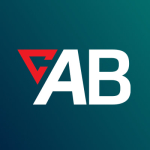What is most valuable?
Workload automation (WLA) these days is no static business. It’s all about running the right workload sequence, at the right time, often triggered by a variety of possible (combination of) events. For instance, we use this principle for running a daily Oracle backup workload batch, which (per backup) involves different systems that in real time have to exchange certain real-time information to be able to successfully end and register the backup in RMAN. Therefore, we use complex event rules that monitor events during the backup process, take care of passing the desired info from one system to the other, and dynamically submit certain jobs that cannot not be defined in advance.
ERP (SAP) connectivity: Thanks to this technology, we were able to fully integrate SAP OS, ABAP and BI (proceschain) workloads with non-SAP workloads, so that a complete business process involving SAP and non-SAP systems could be modelled within one TWS batch. Example: a non-SAP MFT job delivering data @ SAP-PI; in-time PI channel trigger modifies the data for next job; SAP ABAP job works the data into the system involved.
Conditional Branching: WLA often is about critical paths that determine if a batch will be able to end just in time. For instance, C.B. makes it possible to dynamically decide if parts of a predefined batch can or should run in sequence or parallel, depending on the outcome of a certain measured condition, therefore able to meet end-time requirements, even when parts of the batch encounter delay.
HA-DR implementation: No system engineers are required to realize value from these resources @ the application level. TWS makes it possible to use resources, provided at the Application Management level, to meet business requirements for high availability and disaster recovery (HA-DR). We use these resources a lot, not only in case of disaster (e.g., scheduling plan breakdown on master manager; switch to backup-master manager management), but also when TWS management systems in one DC need technical maintenance. In that scenario, we simply switch all our TWS management activities to backup counterparts in another DC, that silently have received up-to-date data from message broadcasts within the TWS network.
How has it helped my organization?
The tool made it possible to automate the technical workflow within complex business process models, within a heterogeneous network hierarchy, consisting of fault-tolerant distributed agents, managed by (master-)management agents.
The tool made it possible to fully automate actual job-workflows that represent complex end-to-end business process models (BPM’s). Those workflows run on systems that reside in a distributed, heterogeneous, logical agent-network (fault-tolerant, ‘extended’, SAP R/3, SAP BI and even cloud/dynamic (e.g. Salesforce, Microsoft SQL) brooker agents).
This agent-network itself is managed by (master-)management fault-tolerant agents that periodically provide all the agents in the network with a static (predefined) scheduling plan for a certain future period of time, and also house a so called event-processor, that is able to have the master-management agent submit just-in-time defined workload into the actual running BPM, as a result from detected events within the network.
What needs improvement?
Today, TWS (TWA) has evolved into version 9.x and the product is now also available as a cloud-provided service (the management parts, from IBM SmartCloud).
I think that is a good and modern development, but the first v9.x releases (and maybe also the latest, I don’t know) lacked the event-driver WLA functionality that was already available for years in older on-prem versions of the product.
That doesn’t help IBM have customers migrate from older on-prem versions to these modern cloud-provided versions, when they would like to migrate.
IBM should have its cloud service deliver at least the same functionalities as their on-premise service has been delivering for years.
For how long have I used the solution?
I have used it for more than 10 years.
What was my experience with deployment of the solution?
No, but it it has been a joint effort with IBM Tivoli L3 support, PostNL IT RHEL and Windows administrators and a dedicated WLA coördinator / TWS administartor.
What do I think about the stability of the solution?
I have not encountered any stability issues at all. No other IT infrastructure @ our company has proven to be as stable as our TWS v8.5.1/8.6 network and all its components.
What do I think about the scalability of the solution?
I have not encountered any scalability issues at all.
How are customer service and technical support?
Customer Service:
Very high. Excellent support, dedicated to their customer
Technical Support:
I receive very good support from a real product specialist.
Over the past 10 years, I frequently contacted IBM to have a ‘PMR’ registered concerning bugs, problems during admin operations, advice on best-practice batch modelling and in one case, for detailed help during a complex scheduling-plan recovery procedure that did not lead to the desired result. I encountered my own knowledge limitations, but was not given the time to acquire that extra knowledge first.
Which solution did I use previously and why did I switch?
We did not previously use a different solution. We started implementing a WLA infrastructure in 1996 and bought the Maestro 7 product from Unison. That product evolved into TWS 8.2 / 8.3 / 8.5.1 / 8.6.
How was the initial setup?
Initial setup was complex; it involved automating huge complex business process models for (nowadays legacy) order, contract and invoice management applications, although limited to mainly workloads for the HP-UX operation system. Later on, the models became less complex, but the agent landscape became more heterogeneous (Solaris, RedHat Linux, SUSE Linux, HP-UX, Win 2003, Win 2008, SAP R/3, SAP BI).
What about the implementation team?
Implementation has been a joint effort with IBM Tivoli L3 support, PostNL IT RHEL and Windows administrators and a dedicated WLA coördinator / TWS administartor
What was our ROI?
No idea how to calculate the ROI in Euro's or Dollar's, but for sure it was worth the investment.
What's my experience with pricing, setup cost, and licensing?
Make your TWS infrastructure auditable by IBM (or to its partners) to be able to benefit from sub-capacity PVU licencing when your networks use a considerably amount of virtualization technology, but above all, when possible, move to cloud-provided TWS management services, to benefit from more modern ‘pay-per-use’ licensing models.
Which other solutions did I evaluate?
We considered starting with Redwood Cronacle for WLA on SAP, but decided to stay with TWS because of the better integration between SAP and non-SAP workloads, and the minimal amount of effort we had to put into education.
What other advice do I have?
Just contact IBM sales and make the first implementation of the product at your site a joint effort between IBM Tivoli L2 personnel from Rome and your WLA administrators.
Disclosure: My company does not have a business relationship with this vendor other than being a customer.














Thanks Sandesh